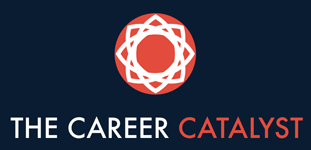
Sort of in the market for a new job but not ready to commit? A passive job search might be a great starting point.
What is a passive job search? In a nutshell, it’s simply being open to new opportunities that might arise without putting much effort into finding them. These folks keep their day jobs but are interested in hearing from employers who reach out to them.
What are the best strategies if you want to become a passive job-seeker?
- Be active on whatever social media you like—but especially LinkedIn or anything specific to your industry. If you use LinkedIn, be sure your profile is complete, including things like relevant experience (including volunteering!), a recent photo, a background banner, and some activity. The activity others can see on your profile includes things like writing recommendations, posting or commenting on articles, and making new posts. On other sites, it might be sharing a success, congratulating someone, or adding a new piece of art. You don’t need to set enormous goals for yourself, of course, but try to make sure you do something on your platforms with some regularity.
- Be intentional about your network. Reach out to interesting people online or via phone. Ask stranger for coffee. If you enjoy networking events, seek those periodically. If you hate the very thought of networking, think of it as relationship-building, and then identify folks you want to connect with and then ask your friends and family if they can connect you. Don’t be intimidated by the outreach. The worst thing that can happen is that someone ignores you!
- Also, don’t hesitate to reach out to old connections. This is really part 2 of point 2, but it’s worth noting because it can be very easy to let those old relationships languish. Connect with your people when you think of it, even if it’s just a quick note to say hi. If you see someone you haven’t been in touch with for a long time, reconnect to check in. Wish people happy birthday and happy work anniversary. It doesn’t need to be a big effort to have big payoffs.
- Make a list of target employers or jobs. I like Excel or Google Sheets for this because it’s easy to search and easy to add new info. If there are particular companies on your list, make a note on your calendar to check their job boards every couple of weeks. If it’s job titles you’re dreaming about, head over to Indeed or Glass Door or whatever you like and search for those a couple of times a month. I’m a huge believer in putting these tasks in my calendar, color-coded so I notice them, in order to remember these actions regularly.
- Keep your resume and LinkedIn profile updated! I know, it’s a pain in the butt, but keeping that info current will ensure that a) interesting places can find you and b) when you hear about something that sounds great, you only need to do a little editing before sending in your documents. I recommend a resume check tied to an annual event—your birthday, the holidays, your annual vacation. If you can associate the updates with something like that, it will help you keep that info current. I do mine at the start of the new year.
- Save some personal time! I know that vacations beckon, but be sure you have a few days off in case you get asked for an interview. You can use sick time as you need to, but if possible, use vacation time instead (if your workplace differentiates) so you feel better about it.
- On that note, be sure you have things like an interview outfit and a current set of references ready, too. If you’ve been in your current role for a long time, you might find your old interview outfit is outdated or has mysteriously shrunk in your closet, so try it on and look at yourself with a critical eye. Your references can be former colleagues, especially if you don’t want to tip your hand to your boss just yet.
- Keep learning. Take advantage of any cross-training your workplace offers, attend talks on new topics if you go to conferences, and engage when people bring up interesting topics, even in social settings.



